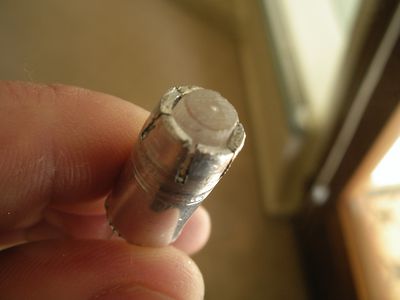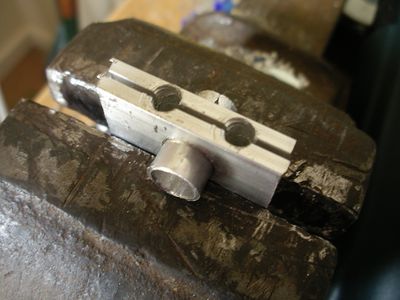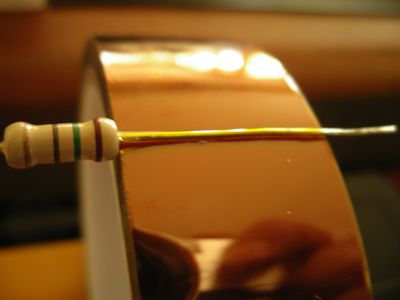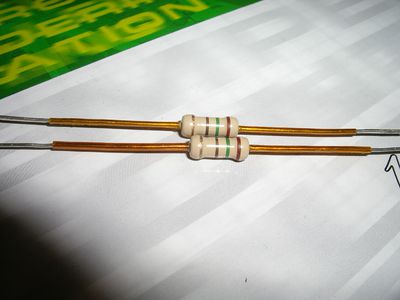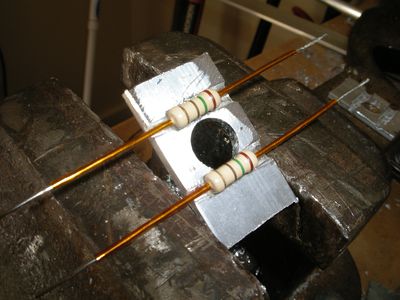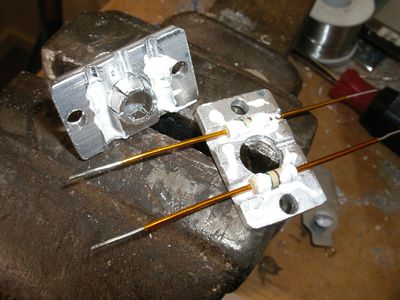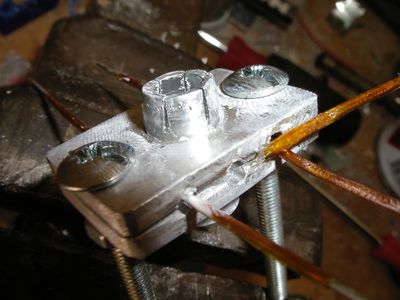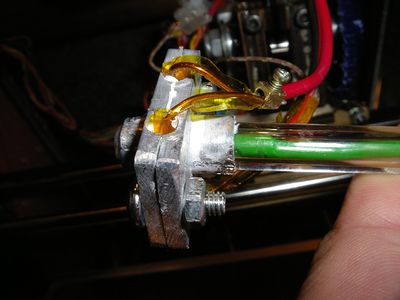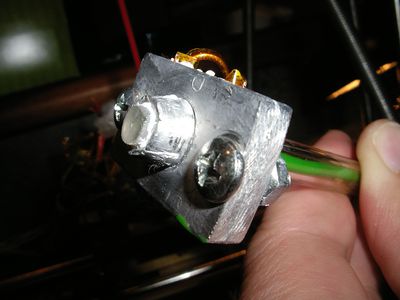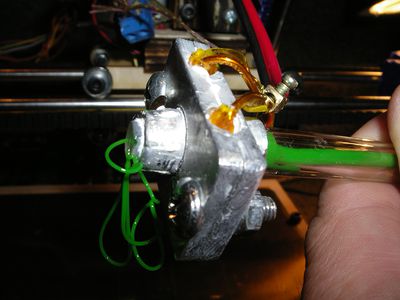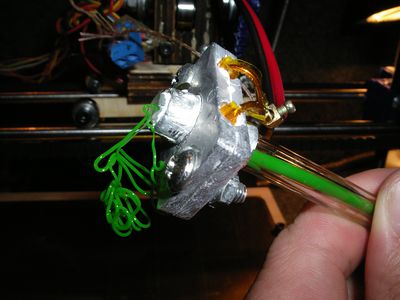Heater Block For Glass Nozzle
Greg Frost has never liked dealing with nichrome. He agrees with nophead and doesn't know why resistor heater blocks are not yet adopted as the official hotend. He also wanted to experiment with glass nozzles. A problem with glass nozzles is the poor conductivity of glass means that you want to deliver heat near the end of the nozzle. When thinking about how this could be done, and rifling through the stuff he had on hand, he found an aluminium tube with 10mm OD and approx 8 mm ID (which matches RocketScientist's glass nozzle OD. A quick ream with an 8mm hand drill, 3 cuts with a hacksaw and a bit of judicial squeezing with some pliers yields this:
He cut 2 pieces of 20mm wide aluminium strip and drilled a 10mm hole through both of them that fitted the sleeve snugly.
He then drilled 2 4.8mm holes as close to the sleeve as possible. Using a hand drill, and being a bit of a hacker, one of the holes actually sliced into the sleeve, but this is actually OK and when the resistor is installed, it will prevent the sleeve from slipping through (or the strips from slipping down.
Then he insulated the resistor leads by wrapping Kapton around them. A handy hint for doing this neatly is to peel a bit off the reel and then slice it off neatly with some scissors. Then put the resistor lead under the small piece of tape sticking up and press it onto the lead. Then rotate the resistor to tightly wind as much Kapton onto it as you like.
In the end you end up with very neat insulated leads like this:
This shows how the resistors sit in the holes that have been drilled for them.
This shows the pieces about to be assembled:
